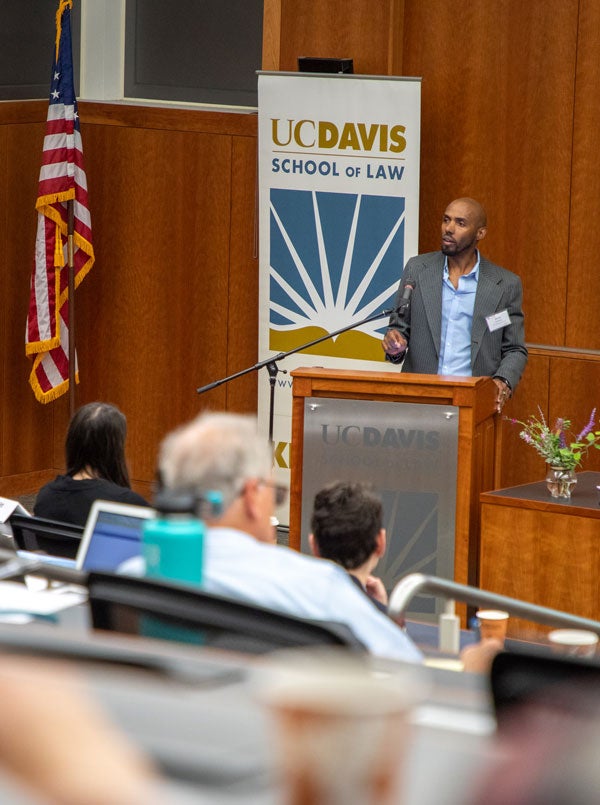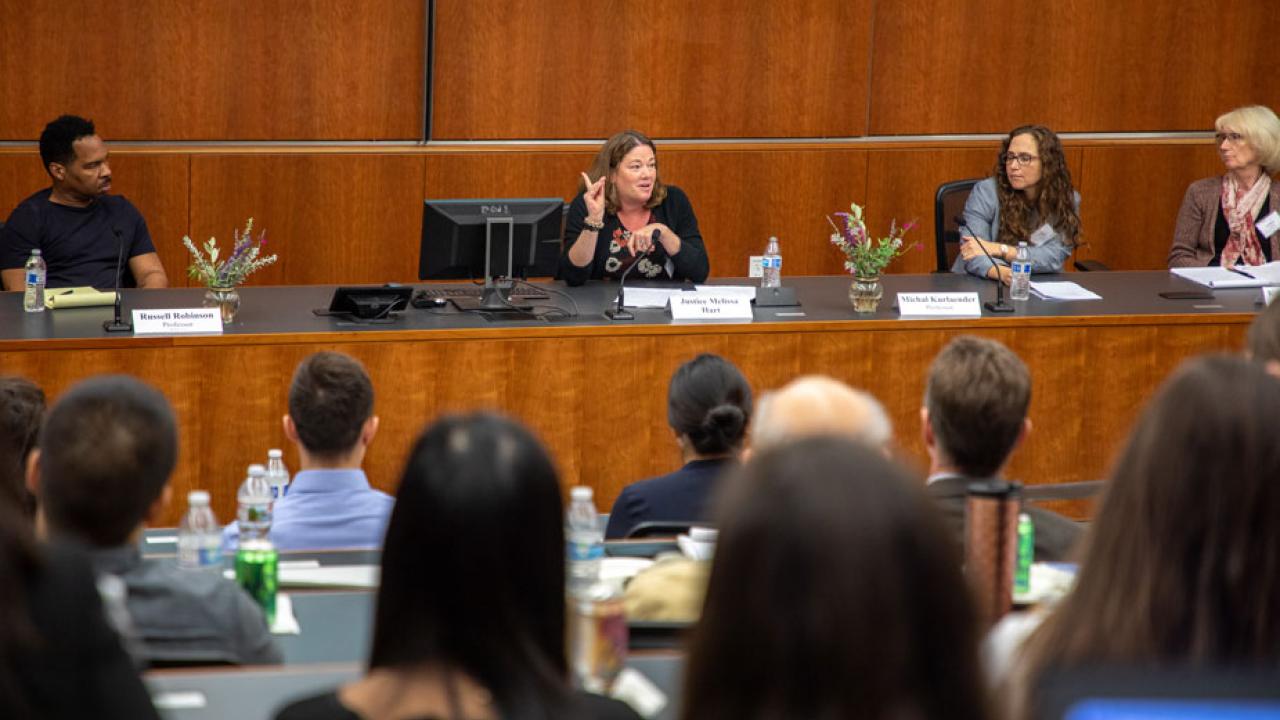For its annual symposium, the UC Davis Law Review chose a landmark, 40-year-old U.S. Supreme Court affirmative action case with UC Davis roots and legal implications still in play today.

The daylong symposium, held Oct. 26, “Bakke at 40: Diversity, Difference and Doctrine,” drew top legal experts to King Hall to discuss the lasting impact of the 1978 decision in Regents of the University of California v. Bakke. Participants included law school deans Kevin R. Johnson of UC Davis and Mario Barnes of the University of Washington; Dean Emerita Rachel Moran of the UCLA law school; and other scholars from several UC campuses and Duke and Yale universities. Justice Melissa Hart of the Colorado Supreme Court also participated.
The case originated when Allan Bakke filed suit after being denied admission to the UC Davis School of Medicine. Bakke, who is white, contended the university violated his 14th Amendment rights by saving 16 slots in a class of 100 for students of color.
The Supreme Court ruled in favor of Bakke, ordering he be admitted to the medical school, from which he graduated in 1982. But the court did not reject affirmative action, only specific quotas. In his oft-cited opinion in the case, Justice Lewis F. Powell Jr. spotlighted Harvard University’s admissions policy as a model for taking race into consideration as one of many factors in admissions.
‘Diversity as constitutional value’
“Bakke is really the case that gave us diversity as the constitutional value that it continues to be to this day,” said Brian Soucek, UC Davis School of Law professor and the law review’s faculty advisor. “Powell’s opinion in Bakke … has had an outsize importance, certainly within higher education admissions, but also in the corporate world — basically anywhere where you see somebody talking about diversity as an important value.”
The case is in the news again with the ongoing trial in a lawsuit targeting Harvard’s admissions practices — the model for the Bakke decision. Harvard is accused of using its “personal rating” tool to reject Asian Americans in favor of students from other backgrounds.
‘Affirmative action policies even by the Harvard model have been hanging by a thread basically since Bakke.’ — Brian Soucek, UC Davis School of Law professor and the law review’s faculty advisor
“When we were talking about it last year, I knew this symposium was a golden opportunity to examine national wounds that have never properly been diagnosed or treated — the legacies of slavery, and of segregation in the United States,” Professor Jonathan Glater of the UC Irvine School of Law said during a symposium panel session. “But I didn’t know how timely it would be.”
If the plaintiffs succeed in the Harvard case, “there would be no way left to do affirmative action,” Soucek said. “If they can take down the Justice Powell model of affirmative action, then it is gone. (And) with the new makeup of the Supreme Court, the odds are incredibly strong that they will overturn (Bakke). Affirmative action policies even by the Harvard model have been hanging by a thread basically since Bakke.”
Proposition 209 sets California limits
California universities have operated under a ban on race, sex and ethnicity as factors in college admissions since 1996, as a result of the voter-approved Proposition 209.
“We have had to find other ways of making sure that we have the diverse student body we want,” Soucek said. “Here at the law school, that’s involved enormous and wonderful outreach to a wide variety of communities, reaching down to grade school.”
Glater spoke of a similar approach, involving “outlier identification” on a national level. Tens of thousands of low-income students have earned high enough test scores to be admitted to highly selective universities, Glater pointed out, and likely would receive scholarships if they applied. But they don’t.
“More schools are looking at interventions to get these students to apply,” Glater said. “It turns out that little things, like sending a postcard, can be enough to make a difference.”
Media Resources
Carla Meyer
